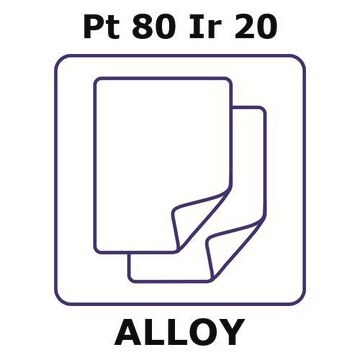GF94883822
Palladium
rod, 25mm, diameter 2.0mm, 99.95%
Sinónimos:
Palladium, PD007920
About This Item
Productos recomendados
Ensayo
≥99.95%
Formulario
rod
fabricante / nombre comercial
Goodfellow 948-838-22
resistividad
9.96 μΩ-cm, 20°C
bp
2970 °C (lit.)
mp
1554 °C (lit.)
densidad
12.02 g/cm3 (lit.)
cadena SMILES
[Pd]
InChI
1S/Pd
Clave InChI
KDLHZDBZIXYQEI-UHFFFAOYSA-N
¿Está buscando productos similares? Visita Guía de comparación de productos
Descripción general
Información legal
Código de clase de almacenamiento
13 - Non Combustible Solids
Clase de riesgo para el agua (WGK)
nwg
Punto de inflamabilidad (°F)
Not applicable
Punto de inflamabilidad (°C)
Not applicable
Elija entre una de las versiones más recientes:
Certificados de análisis (COA)
It looks like we've run into a problem, but you can still download Certificates of Analysis from our Documentos section.
Si necesita más asistencia, póngase en contacto con Atención al cliente
¿Ya tiene este producto?
Encuentre la documentación para los productos que ha comprado recientemente en la Biblioteca de documentos.
Global Trade Item Number
| Número de referencia del producto (SKU) | GTIN |
|---|---|
| GF94883822-1EA | 4061825340081 |
| GF94883822-2EA | 4061829523442 |
Nuestro equipo de científicos tiene experiencia en todas las áreas de investigación: Ciencias de la vida, Ciencia de los materiales, Síntesis química, Cromatografía, Analítica y muchas otras.
Póngase en contacto con el Servicio técnico


